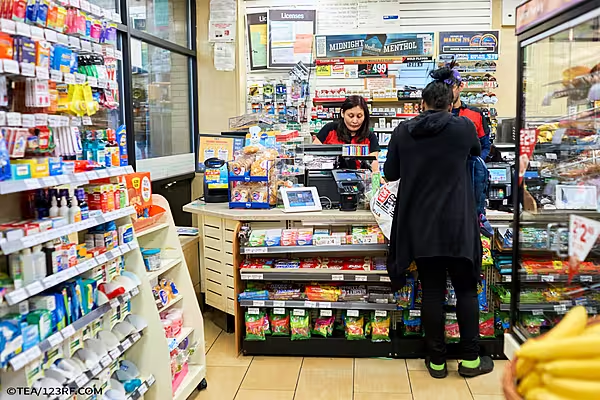U.S. consumers feel great, right? The presidential election is over. Talk of jobs and infrastructure spending, coupled with stock-market indices flirting with all-time highs, is stoking excitement for the future -- at least according to figures released Thursday that track Americans' economic expectations.
The Bloomberg Consumer Comfort Index rose in December to its highest level in nearly two years. Other confidence gauges, from the University of Michigan and the Conference Board, show the same trend.
Just don't expect the cheery sentiment to translate into an overly merry holiday season, as far as actual retail sales and consumer-spending numbers are concerned.
Also on Thursday, the government released November consumer-spending figures, including the Black Friday shopping extravaganza, that showed spending decelerated for the second consecutive month. Even worse, personal income, after taxes and adjusted for inflation, declined for the first month since October 2013. Retail stocks suffered their worst day since June, with retailers making up eight out of Thursday's 10 worst-performing stocks in the S&P 500.
In other words, talk is cheap.
Anyone who followed the polling ahead of Britain's vote to leave the European Union or Donald Trump's win in the U.S. presidential election has already learned this lesson: People's feelings don't always match up with their actions.
Now, we're seeing the same disconnect bubble up in government economic data.
There's a clear bifurcation between measures of sentiment -- or how people feel -- and hard measures of economic activity -- or what's actually happening, according to Bloomberg Intelligence economist Richard Yamarone.
Not only is the dissonance showing up in consumer confidence, but the same trend can be seen in other indicators tracked by government officials, economists and investors to gauge the health of the U.S. economy.
For instance, home builders' confidence rose in December to the highest level since July 2005, right before the peak of the last decade's housing bubble, according to the National Association of Home Builders' sentiment measure.
Yet, despite these good feelings, groundbreaking on new housing units plunged in November, the Commerce Department reported last week, and have been mostly flat for more than a year.
Likewise, the closely watched Institute for Supply Management's manufacturing index, which gauges U.S. factory sentiment, has risen for the past three months.
But the Federal Reserve's measure of industrial production, which gauges the actual output of factories, mines, utilities and more, in November posted its biggest decline since March.
As for the consumer data, the correlation between confidence and actual spending has historically been positive, but not all that strong. Changes in consumer confidence have accounted for only about a third of the changes in spending over the past 15 years, according to Bloomberg data.
People may feel more optimistic about the future, but that doesn't mean they're going to blow their savings on holiday gifts -- at least not at department stores, anyway.
This column does not necessarily reflect the opinion of Bloomberg LP and its owners.
News by Bloomberg, edited by ESM. To subscribe to ESM: The European Supermarket Magazine, click here.














